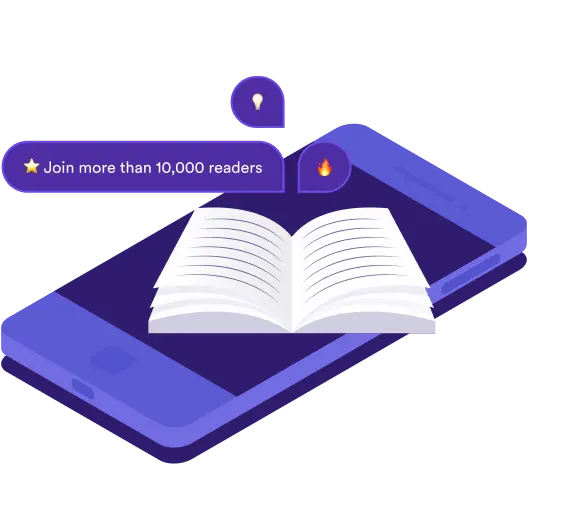Interested in SnackzLAB or SnackzAGENT? 👉🏼 This way!

Enjoying Snackz.ai?
Sign up!
or
I agree to the Privacy Policy and the Terms of Service.
Already have an account?
📩 Check your inbox!
A link to reset your password has been sent to your email address.
Reset Password
No worries! Just enter your email below, and we'll help you reset that password:
Enjoying Snackz.ai?
Sign up!
or
I agree to the Privacy Policy and the Terms of Service.
Already have an account?
📩 Check your inbox!
A link to reset your password has been sent to your email address.
Reset Password
No worries! Just enter your email below, and we'll help you reset that password:
Tim Wu
Where would you like to order?
Please select your country to proceed with the checkout.
⚡ Free 3min Summary
The Attention Merchants - Summary
The Attention Merchants by Tim Wu explores how human attention has become one of the most valuable commodities in the modern economy. Wu traces the history of this phenomenon from the 19th century, starting with Benjamin Day's penny newspapers, through the rise of radio, television, and the internet. Each medium has found ways to capture and monetize our attention, often with significant societal implications.
Key Ideas
The Evolution of Attention Capture
Wu details how the methods of capturing human attention have evolved over time. From the early days of penny newspapers to the sophisticated algorithms of modern social media platforms, the strategies have become increasingly complex and pervasive. This historical perspective helps readers understand the roots of our current media environment.
The Business Model of Free Content
A central theme in the book is the business model that offers free content in exchange for user attention, which is then sold to advertisers. This model has remained consistent across different media, from radio and television to the internet. Wu explains how this approach has shaped the content we consume and the way we interact with media.
The Impact on Society
Wu also explores the broader societal implications of the attention economy. He discusses how the relentless pursuit of our attention affects our mental health, our politics, and our culture. By highlighting these impacts, Wu encourages readers to critically evaluate the media they consume and consider the true cost of 'free' content.
FAQ's
'The Attention Merchants' primarily focuses on how human attention has become a valuable commodity in the modern economy. Tim Wu traces the history of this phenomenon from the 19th century to the present, examining how various media have captured and monetized our attention.
Tim Wu explains the evolution of attention capture by detailing the progression from penny newspapers in the 19th century to modern social media platforms. He highlights how strategies for capturing attention have become more complex and pervasive over time, providing a historical perspective that helps readers understand the roots of our current media environment.
'The Attention Merchants' discusses several societal impacts of the attention economy, including effects on mental health, politics, and culture. Tim Wu encourages readers to critically evaluate the media they consume and consider the true cost of 'free' content, highlighting the broader implications of the relentless pursuit of our attention.
💡 Full 15min Summary
The attention economy revolves around the concept that human attention has become a scarce and valuable resource in the face of information abundance. Attention merchants, such as advertisers and media companies, compete to capture and hold people's attention, which they then resell to businesses for profit. This competition has led to the rise of attention scarcity, as people are constantly bombarded with information and stimuli, making it difficult for them to focus on any single piece of content.
One of the earliest examples of attention merchants can be traced back to the 19th century with the creation of the first newspapers fully dependent on advertising. These newspapers captured people's attention with sensational stories and eye-catching headlines, and then resold that attention to advertisers who placed their ads alongside the content. This model has since evolved and expanded to include radio networks, broadcast television, and digital platforms like Google and Facebook.
A key study that illustrates the attention economy is the famous "goldfish study" conducted by Microsoft in 2015. The study found that the average human attention span had dropped from 12 seconds in 2000 to just 8 seconds in 2015, which is shorter than the attention span of a goldfish. This decline in attention span is attributed to the constant barrage of information and stimuli that people are exposed to in the digital age.
Another example of the attention economy in action is the rise of clickbait headlines and sensationalized content on social media platforms. These attention-grabbing tactics are designed to capture users' attention and drive them to click on articles or videos, which in turn generates ad revenue for the content creators and platforms.
In conclusion, the attention economy is a result of the competition between attention merchants to capture and resell human attention in an era of information abundance. This competition has led to attention scarcity, as people struggle to focus on any single piece of content amidst the constant barrage of information and stimuli. The attention economy has significant implications for businesses, media, and individuals, as it shapes how we consume and interact with content in our daily lives.
Enjoyed the sneak peak? Get the full summary!
Let's find the best book for you!
AdvertisementSection.TitleNew
AdvertisementSection.SubTitleNew

Get the books directly into your inbox!
✅ New Release
✅ Book Recommendation
✅ Book Summaries
Copyright 2023-2026. All rights reserved.